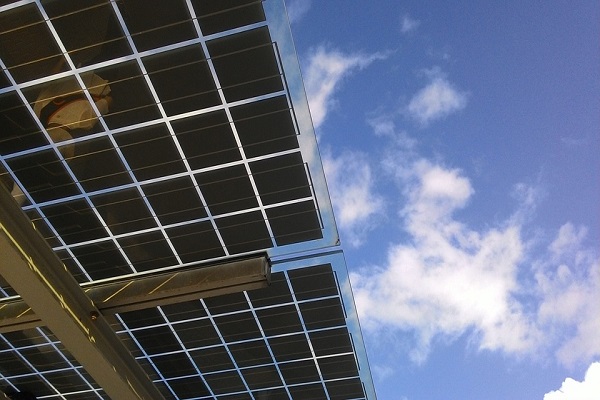Solar panels are proliferating across the globe to help reduce the world’s dependency on fossil fuels. But conventional panels are not without environmental costs, too. Now scientists are reporting in the Journal of the American Chemical Society a new advance toward more practical, “greener” solar cells made with inexpensive halide perovskite materials.
They have developed low-bandgap perovskite solar cells with a reduced lead content and a power conversion efficiency of 15 percent.
In hopes of one day replacing silicon-based photovoltaic cells, which are relatively expensive and require a lot of energy to make, scientists have turned to hybrid organic-inorganic lead halide perovskites that can be developed at a lower cost using less energy than silicon.
The efficiency of these materials has increased rapidly over the past several years. But further improving the efficiency requires stacking two sub-cells with the top one exhibiting a wide bandgap and the bottom a low bandgap to form a tandem cell.
The bandgap refers to the lowest energy of light that a semiconductor can absorb. The performance of low-bandgap perovskite cells has been lagging for many years. Dewei Zhao, Ren-Gen Xiong, Yanfa Yan and colleagues sought a way to change this.
For their solar cells, the researchers developed a new precursor solution combining formamidinium tin iodide and methylammonium lead iodide. The resulting tin-lead perovskite cells had low bandgaps and up to 15 percent power conversion efficiency.
Other teams recently reported low-bandgap cells with about 13.6 percent efficiency. Additionally, the cells contained 60 percent less lead than the lead-based, single-junction (non-tandem) perovskite solar cell holding the current record efficiency of 22.1 percent.
The reduction in lead content and improved efficiency for a low-bandgap cell represent a significant step toward practical, more environmentally friendly perovskite tandem solar cells, the researchers say.
Reference(s):
Publication: Weiqiang Liao, Dewei Zhao, Yue Yu, Niraj Shrestha, Kiran Ghimire, Corey R. Grice, Changlei Wang, Yuqing Xiao, Alexander J. Cimaroli, Randy J. Ellingson, Nikolas J. Podraza, Kai Zhu, Ren-Gen Xiong, Yanfa Yan. Fabrication of Efficient Low-Bandgap Perovskite Solar Cells by Combining Formamidinium Tin Iodide with Methylammonium Lead Iodide. Journal of the American Chemical Society, 2016
Research story: American Chemical Society (ACS) | September 28, 2016 (source)













Comments